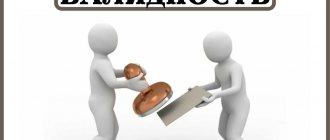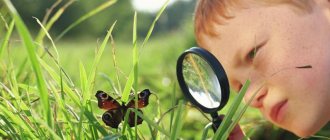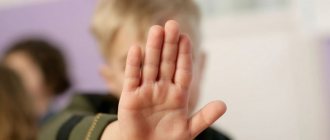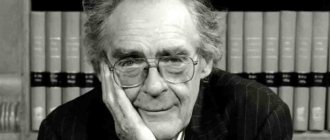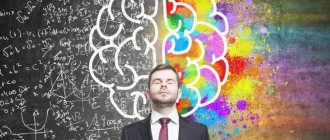An experiment is one of the methods of understanding the surrounding reality available to the scientific worldview, justified by the principles of repeatability and evidence. This method is built individually depending on the chosen area, based on theories or hypotheses put forward, and occurs under specially controlled or controlled conditions that satisfy the research request. The experimental strategy involves purposefully structured observation of a selected phenomenon or object under conditions predetermined by a hypothesis. In the psychological field, an experiment involves joint interaction between the experimenter and the subject, aimed at completing pre-developed experimental tasks and studying possible changes and relationships.
The experiment belongs to the section of empirical methods and acts as a criterion for the truth of an established phenomenon, since an unconditional condition for the construction of experimental processes is their repeated reproducibility.
Experiments in psychology are used as the main way to change (in therapeutic practice) and study (in science) reality, and have traditional planning (with one unknown variable) and factorial (when there are several unknown variables). In cases where the phenomenon under study or its area appears to be insufficiently studied, a pilot experiment is used to help clarify the further direction of constructing hypotheses.
It differs from the research method of observation and non-intervention by active interaction with the object of study, intentional evocation of the phenomenon being studied, the possibility of changing process conditions, the quantitative ratio of parameters, and includes statistical data processing. The possibility of controlled changes in the conditions or components of an experiment allows the researcher to study a phenomenon more deeply or notice previously unidentified patterns. The main difficulty in applying and assessing the reliability of the experimental method in psychology lies in the frequent involvement of the experimenter in interaction or communication with subjects and indirectly, under the influence of subconscious motives, can influence the results and behavior of the subject.
Specifics of the experimental method:
1. Active position of the researcher. The researcher can cause a mental phenomenon as many times as necessary to test the hypothesis.
2.
Creation of a pre-thought-out artificially created situation in which the property being studied is best manifested and can be more accurately and easily determined.
3.
In experimental studies, it is important that all subjects are equal in age, health, motives for participation, etc.
4.
The reliability of the hypothesis being tested is achieved either by repeating experiments multiple times, or by using a sufficient number of subjects followed by mathematical processing.
11 pages, 5166 words
History of the “experiment” method in psychology
... bound, or the proof which he gives.” 1. History of the “experiment” method in psychology 1.1. History of the “experiment” method in Russia The successes of psychology were due to the introduction into it ... which were met and overcome by past researchers. Our goal is to attempt to outline the specific problems of the experimental approach in psychology. The experimental method is in reality only ...
5.
The results of each experiment are recorded in a protocol, which records general information about the subjects, indicates the nature of the experimental task, the time of the experiment, the quantitative and qualitative results of the experiment, the characteristics of the subjects: actions, speech, etc.
6.
When experimenting with children, it is very important to keep in mind that the child may perceive the task not as it was formulated, but in a different way.
General information
Robert Woodworth, who published his classic textbook on experimental psychology (Experimental psychology), defined an experiment as a structured study in which the researcher directly changes some factor (or factors), holds the others constant, and observes the results of systematic changes. He considered the control of the experimental factor
, or in Woodworth's terminology, the "independent variable", and tracking its effect on
the observed consequence
, or "dependent variable". The experimenter's goal is to keep all conditions constant except one—the independent variable.
In a simplified example, the independent variable can be considered as a relevant stimulus
(
St(r)
), the strength of which is varied by the experimenter, while the dependent variable is the reaction (
R
) of the subject, his psyche (
P
) to the influence of this relevant stimulus.
However, as a rule, the desired stability of all conditions, except for the independent variable, is unattainable in a psychological experiment, since almost always, in addition to these two variables, there are also additional variables, systematic irrelevant stimuli
(
St(1)
) and random stimuli (
St(2)
), leading to systematic and random errors, respectively. Thus the final schematic representation of the experimental process looks like this:
Therefore, in an experiment, three types of variables can be distinguished:
- Independent variable
- Dependent Variable
- Additional variables (or external variables)
So, the experimenter is trying to establish a functional relationship between the dependent and independent variables, which is expressed in the function R
=f(
St(r)
), while trying to take into account the systematic error that arose as a result of the influence of irrelevant stimuli (examples of systematic error include the phases of the Moon, time of day, etc.). To reduce the likelihood of the impact of random errors on the result, the researcher seeks to conduct a series of experiments (an example of a random error could be, for example, fatigue or a speck of dust getting into the subject’s eye).
The main objective of the experimental study
The general goal of psychological experiments is to establish the existence of a connection R
=f(
S, P
) and, if possible, the type of function f (there are various types of relationships - cause-and-effect, functional, correlation, etc.).
In this case, R
is the subject’s reaction,
S
is the situation, and
P
is the subject’s personality, psyche, or “internal processes.” That is, roughly speaking, since mental processes cannot be “seen,” in a psychological experiment, based on the reaction of the subjects to stimulation regulated by the experimenter, some conclusion is made about the psyche, mental processes or personality of the subject.
Stages of the experiment
In each experiment, the following stages can be distinguished. The first stage is setting the problem and goal, as well as constructing an experimental plan. The experimental plan should be built taking into account accumulated knowledge and reflect the relevance of the problem.
Validity in a psychological experiment
Main article: Validity (psychology)
As in natural science experiments, so in psychological experiments, the cornerstone is the concept of validity: if the experiment is valid, scientists can have some confidence that they measured exactly what they intended to measure. Many measures are taken to ensure all types of validity are met. However, it is impossible to be absolutely sure that in any, even the most well-thought-out study, all validity criteria can be completely met. A completely flawless experiment is unattainable.
Types of experiment:
1. Laboratory experiment –
is carried out in deliberately created conditions (specially equipped room), using means of recording the obtained data, the actions of the subject are determined by the instructions.
2.Natural experiment –
is organized and carried out in ordinary life conditions, where the experimenter almost does not interfere with the course of events, recording them as they unfold on their own. Before starting his work, the researcher gets to know the children and takes an active part in their lives, so the classes conducted by the experimenter do not cause concern.
3. Formative experiment –
its idea is to artificially recreate (model) the process of mental development. The goal is to study the conditions and patterns of origin of one or another mental neoplasm.
Examples of similar educational works
Psychological conditions for preventing conflict situations
... the study was carried out on the basis of the workforce of CJSC NPO "Stromecology" Centerproject. 24 people took part in the experiment. The average age of the subjects is 20-35 years. Purpose of the study: to determine the causes of conflict situations. For …
Families at risk in the modern sociocultural situation of society
... researchers Josef Langmeier and Zdenek Matejczyk call deprivation a condition that arises as a result of certain life situations ... families at risk in the modern socio-cultural situation of society. The objectives of our research: ...
The concept of a conflict situation. Conditions for a conflict situation to develop into a conflict
… under certain conditions. A conflict situation is a condition for the emergence of conflict. To escalate such a situation into a conflict... tensions in the work team can be identified by ordinary observation. The following forms of manifestation are possible...
Methods of psychological and pedagogical research
... modeling. Typically, theoretical methods are used to analyze literary sources. The researcher is called upon to improve... the conditions for an effective educational process in this area are highlighted by scientists [3, p. 44]. Features of the methods...
Cognitive assessment of difficult life situations
... difficult life situation. 30 subjects (age 35-45 years) took part in the experiment. Of the subjects we have chosen, we ... them systems. At the same time, what aspects of the situation - its physical conditions or, for example, social norms, rules and...
Acquired (learned) helplessness
Acquired helplessness is a mental state in which an individual does absolutely nothing to somehow improve his situation, even having such an opportunity. This condition appears mainly after several unsuccessful attempts to influence the negative influences of the environment. As a result, the person refuses any action to change or avoid the harmful environment; the feeling of freedom and faith in one’s own strength is lost; depression and apathy appear.
This phenomenon was first discovered in 1966 by two psychologists: Martin Seligman and Steve Mayer. They conducted an experiment on dogs. The dogs were divided into three groups. The dogs from the first group stayed in cages for a while and were released. Dogs in the second group were given small shocks, but were given the opportunity to turn off the electricity by pressing a lever with their paws. The third group was subjected to the same electric shocks, but without the ability to turn it off. After some time, the dogs from the third group were placed in a special enclosure, from where they could easily get out by simply jumping over the wall.
In this enclosure, the dogs were also subjected to electric shocks, but they continued to remain in place. This told scientists that the dogs had developed “learned helplessness”; they began to believe that they were helpless in the face of the outside world. Afterwards, scientists concluded that the human psyche behaves in a similar way after several failures. But was it worth subjecting dogs to torture in order to find out what, in principle, we all have known for so long?
Probably, many of us can remember examples of confirmation of what scientists proved in the above-mentioned experiment. Every person in life can have a streak of failures when it seems that everything and everyone is against you. These are moments when you give up, you want to give up everything, stop wanting something better for yourself and your loved ones. Here you need to be strong, show fortitude and fortitude. It is these moments that temper us and make us stronger. Some people say that this is how life tests your strength.
And if you pass this test steadfastly and with your head held high, then luck will be favorable. But even if you don’t believe in such things, just remember that it’s not always good or always bad, because... one always replaces the other. Never lower your head and do not betray your dreams - they, as they say, will not forgive you for this. In difficult moments of life, remember that there is a way out of any situation and you can always “jump over the wall of the enclosure,” and the darkest hour is before the dawn.
You can read more about what learned helplessness is and about experiments related to this concept here.
11
Advantages and disadvantages
In psychology, a number of advantages and disadvantages of experiment are highlighted. Pros:
- You can repeat the event under study to confirm the data or obtain new information.
- High accuracy of the results obtained.
- You can select any moment of the event being studied for in-depth study.
- Ability to manipulate independent variables to obtain new information.
Minuses:
- Deliberate influence on the psyche of the subject.
- Possibility of obtaining an aggressive reaction to the created conditions.
Experiments are carried out after passing psychological tests, so as not to harm the subject.
Stages of experimental activity
- Formulation of a cognitive task, a goal associated with the experimental method.
- Selection of equipment and design of experimental setup.
- A statement of the physical principle on which the experimental method will be applied.
- Observation of a phenomenon, process.
- Measurement (reading the necessary measurements on the equipment, obtaining some experimental data).
- Description, interpretation of experimental data and their analysis.
- Formulation of conclusions, conclusion, practical significance of the results obtained.

